Disclosure: This article contains affiliate links. We may earn a commission from purchases at no extra cost to you, which helps our travel content.
The ancient city of Fez reveals itself first through scent—cinnamon and saffron dancing through narrow alleyways, mint tea brewing in copper pots, and freshly baked khobz bread steaming from centuries-old communal ovens. As someone who navigates the world through visual patterns, I found myself equally intoxicated by Morocco's sensory choreography of flavors. This past spring, I spent a week immersing myself in the culinary heartbeat of Fez, where every meal tells a story written in spice and tradition—a narrative I'm eager to share with couples seeking both romance and adventure through food.
The Medina's Culinary Tapestry
Fez's UNESCO-protected medina isn't just the world's largest car-free urban area—it's a living museum of culinary tradition where 9,000 labyrinthine alleyways harbor food secrets dating back to the 9th century. My exploration began at Bab Boujloud, the ornate blue gate where the medina's pulse is strongest.
Navigating these narrow passages can be overwhelming for first-timers. Rather than relying solely on Google Maps (which often fails in the medina's depths), I invested in a compass that became unexpectedly essential. The medina's high walls block GPS signals, but this reliable tool helped me mark cardinal directions from major landmarks.
I spent my first morning photographing the geometric patterns of spice pyramids—ochre turmeric, crimson paprika, golden cumin—while vendors called out in a melodic blend of Arabic and French. The spice market near R'cif Square offers the most photogenic displays and authentic quality. Here I purchased a handcrafted wooden spice box that now travels with me, carrying the essential Moroccan quintet: cumin, cinnamon, ginger, turmeric, and paprika.
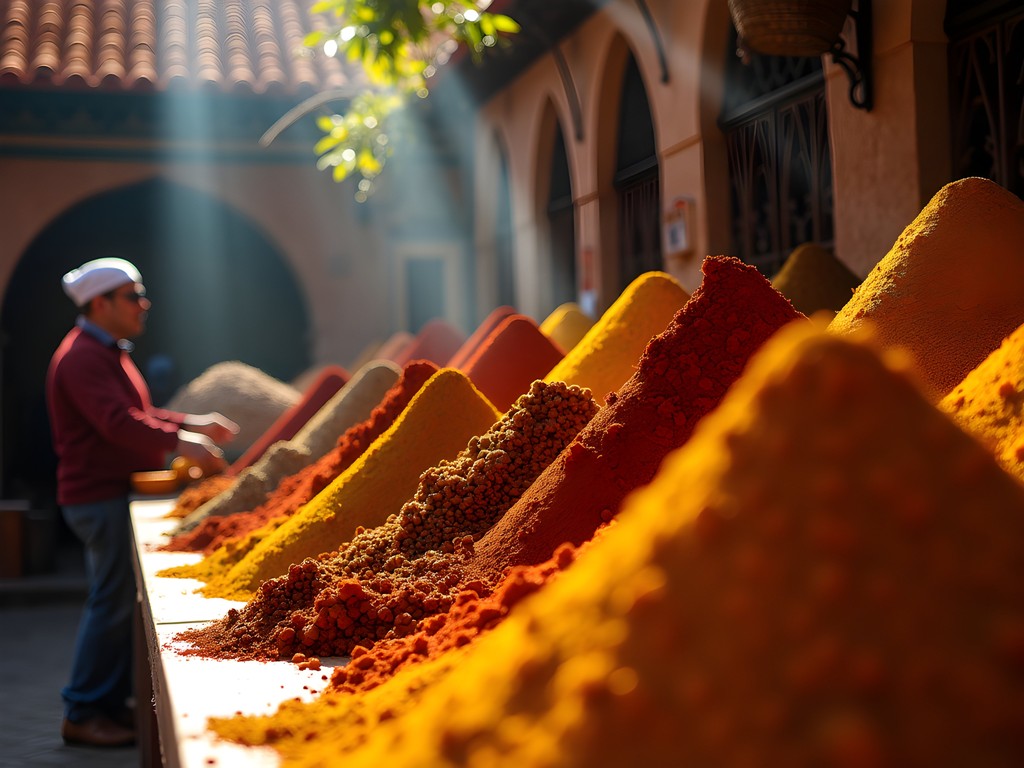
💡 Pro Tips
- Visit food markets before 11am when produce is freshest and crowds are thinner
- Learn basic Arabic food terms like 'kam?' (how much?) and 'shukran' (thank you) to engage with vendors
- Photograph spice displays in early morning when sunlight creates dramatic shadows through the medina's covered passages
Cooking with Fatima: Learning Family Secrets
After researching countless cooking classes, I bypassed the tourist-oriented options for something more intimate—a home-based workshop with a Fassi grandmother named Fatima, arranged through the riad where I stayed. Her kitchen, nestled in a 300-year-old home with intricate zellige tilework and a central courtyard, became my classroom for three afternoons.
Fatima spoke limited English, communicating instead through her daughter's translation and the universal language of demonstration. Her hands—weathered but precise—showed me how to properly build a tagine: meat first, vegetables arranged in concentric circles, spices measured not in teaspoons but in practiced pinches. The tagine pot she used had been seasoned by decades of use, developing a patina that no new cookware could replicate.
What struck me most was how Fatima's cooking incorporated elements of calligraphy—the deliberate swirl of honey drizzled over pastilla, the precise arrangement of preserved lemons in a chicken tagine. Like the Arabic script my father taught me to appreciate, Moroccan cuisine is both art and communication, with technique passed down through generations of women whose kitchens served as informal culinary academies.
By our final session, I'd mastered not only tagine but also the art of Moroccan salads—the refreshing combination of cucumber, tomato and herbs that begins every proper meal—and the delicate pastry work required for bastilla, a sweet-savory pie that represents the pinnacle of Fassi cuisine.
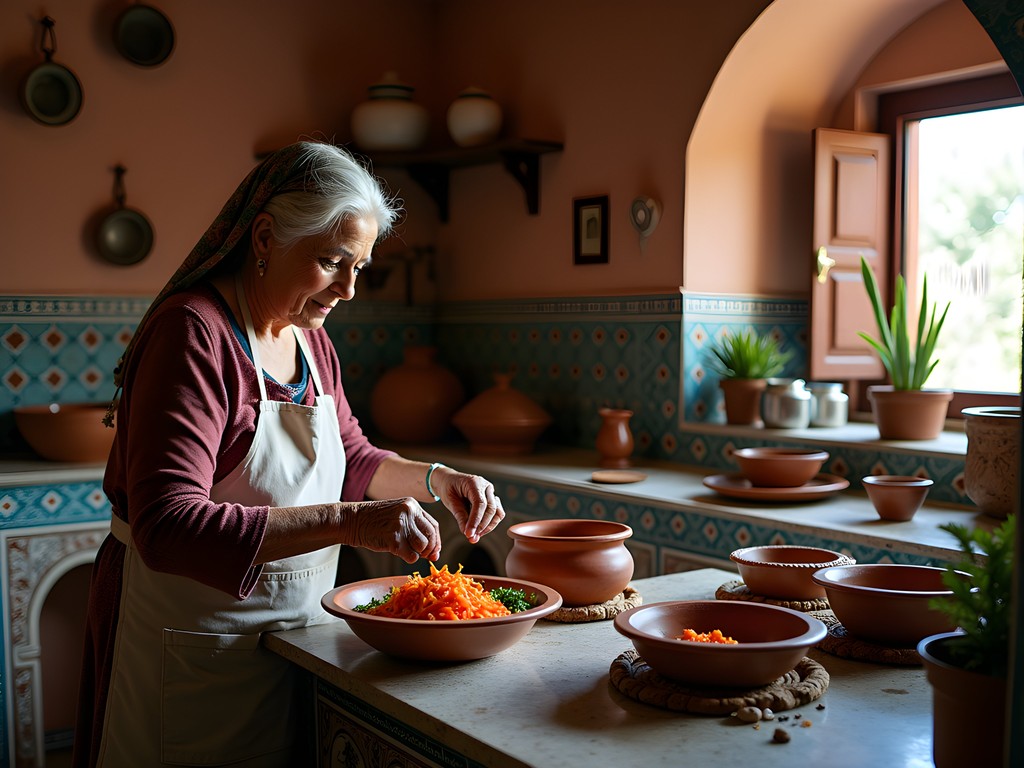
💡 Pro Tips
- Book cooking classes through your accommodation for more authentic, less commercialized experiences
- Request to visit the market with your instructor to learn how to select the best ingredients
- Take detailed notes on spice combinations—Moroccan cooking relies on precise balances that aren't easily replicated by taste alone
Dawn at the Communal Bread Ovens
The rhythms of Fez are dictated by bread. Each morning before sunrise, I joined local women carrying trays of prepared dough to the ferran—neighborhood communal ovens that have operated continuously for centuries. The ferran master recognized me by my third visit, nodding with approval as I photographed the hypnotic process of dough-marking (each family creates a distinctive pattern to identify their loaves) and the balletic movements of his long wooden paddle extracting perfectly browned khobz.
This daily bread ritual reveals the community-centered approach to Moroccan cooking. Even families with modern kitchens still bring their bread to these ancient ovens, understanding that the distinctive flavor comes not just from ingredients but from the accumulated history of the stone chambers.
I began carrying a insulated food container to bring still-warm bread back to my riad, where I'd enjoy it with local honey and mint tea while watching the city awaken from the rooftop terrace. The container kept the bread perfectly warm for hours—essential for experiencing khobz as locals do.
For photographers, these ovens offer exceptional opportunities to capture both cultural tradition and compelling light. The glow of the fire illuminates faces in a chiaroscuro effect that reveals character in every crease and smile.
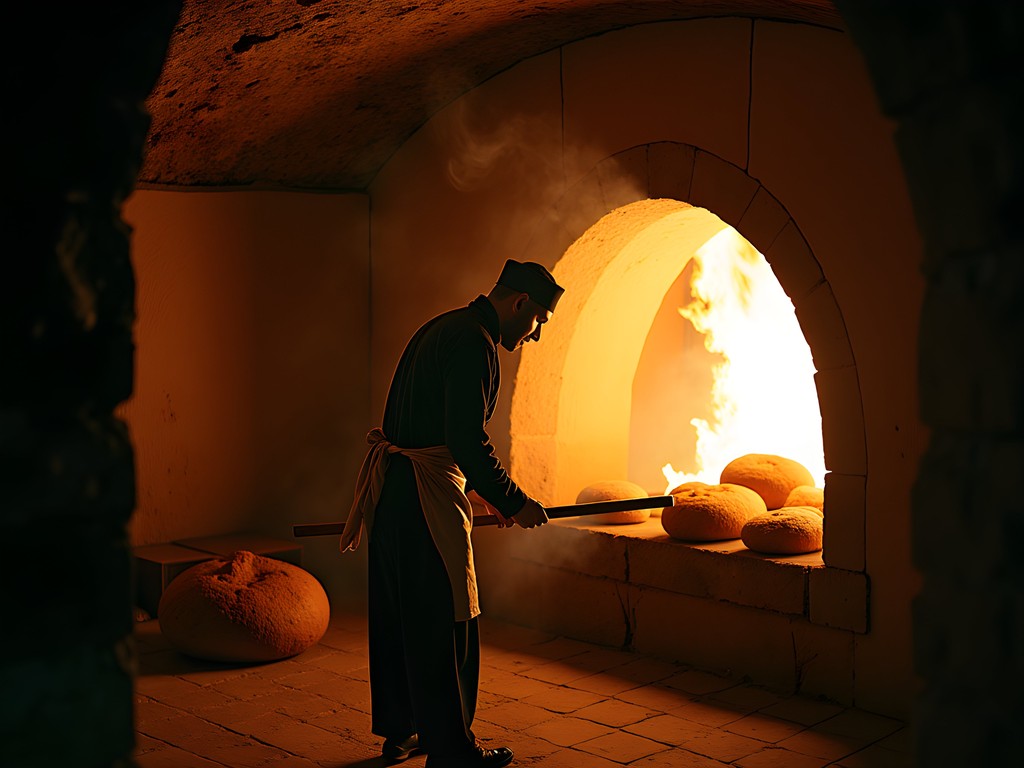
💡 Pro Tips
- Visit communal ovens between 6-7am to witness the full bread-making process from dough delivery to baking
- Ask permission before photographing people at the ovens—a small purchase of bread usually grants goodwill
- Learn the Arabic word 'ferran' (bread oven) to help locate these authentic spots that aren't on tourist maps
The Midnight Market of R'cif
Most travel guides direct visitors to the touristy food markets near Bab Boujloud, but locals revealed to me the existence of R'cif's midnight market—a nocturnal gathering where restaurants and households source the freshest ingredients. Arriving just before midnight, I witnessed an entirely different side of Fez's culinary scene.
Under strings of bare bulbs, farmers from surrounding villages displayed produce harvested that evening. Fish vendors sold catches that had arrived from the coast just hours earlier. The transactions were swift, the quality exceptional, and the prices remarkably lower than daytime markets.
Navigating this authentic space requires confidence and respect. I dressed conservatively and carried my camera discreetly in a anti-theft crossbody bag that allowed quick access while maintaining security in the crowded market. The bag's slash-proof construction and locking compartments provided peace of mind while photographing in dense crowds.
The night market also revealed Fez's astronomical connection—vendors used the position of stars visible between medina rooftops as timekeepers, just as their ancestors had for centuries. As someone fascinated by celestial navigation, I appreciated this traditional method that persists despite modern alternatives.
For couples seeking romance with a dash of adventure, this midnight excursion offers an experience far from the typical tourist path—though I'd recommend visiting with a local guide your first time to navigate both the physical space and cultural expectations.
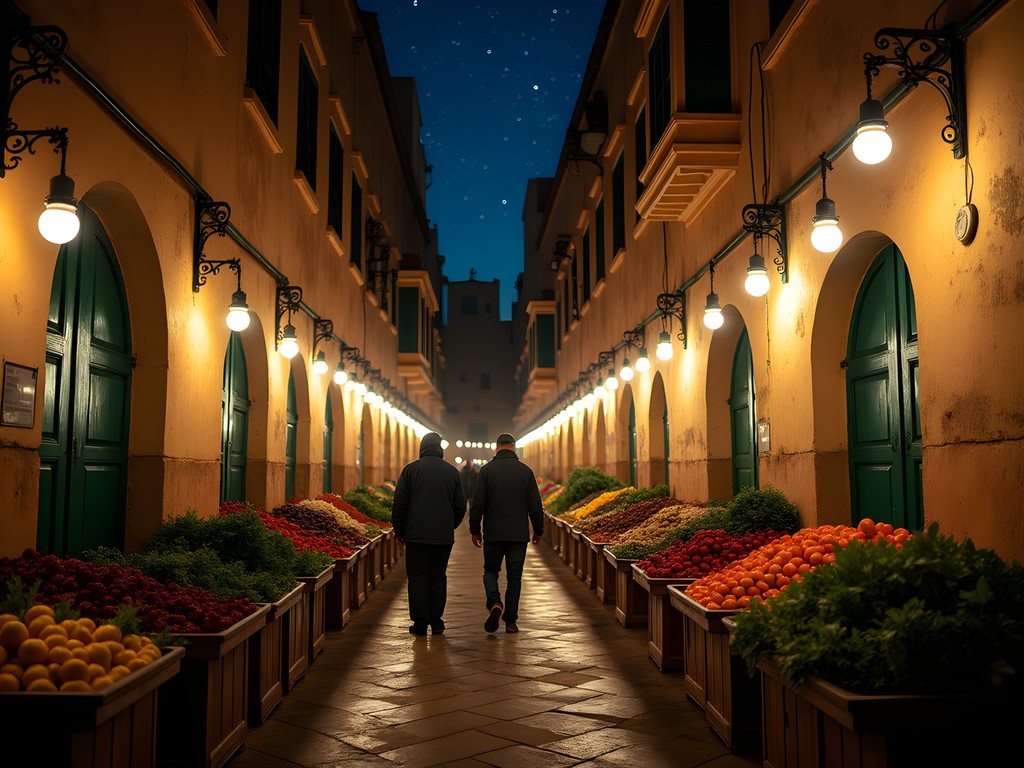
💡 Pro Tips
- Arrive between 11:30pm-1am for peak market activity at R'cif midnight market
- Bring small denominations of dirhams for easier transactions
- Consider hiring a local guide through your riad for your first visit to help navigate cultural norms
From Market to Table: Creating a Romantic Feast
For our final evening in Fez, my riad arranged a special experience—the opportunity to prepare a complete Moroccan feast under Fatima's guidance, using ingredients we'd selected together at the market that morning. This culminating lesson was designed specifically for couples, teaching not just recipes but the choreography of cooking together in the Moroccan tradition.
We began at Ain Azliten market, where Fatima taught us to select the perfect ingredients: unbruised eggplants with tight, glossy skin; pomegranates heavy with juice; and fragrant bundles of mint and cilantro. I recorded these market moments using a smartphone gimbal that allowed for smooth tracking shots through crowded aisles without drawing undue attention.
Back in her kitchen, we prepared a progressive feast: first, a spread of cold salads including zaalouk (smoky eggplant) and taktouka (roasted peppers with tomato); then a lamb tagine with prunes and almonds; and finally, a dessert of orange slices infused with cinnamon and orange blossom water.
Fatima emphasized that Moroccan cooking is inherently romantic—dishes designed for sharing, eaten with hands from common plates, creating intimacy through food. She showed us how to arrange the meal for maximum visual impact, explaining that Moroccan hosts 'eat with their eyes first'—a concept that resonated with my designer's appreciation for visual composition.
The evening culminated with mint tea service, where Fatima demonstrated the dramatic high pour that aerates the tea and creates a delicate foam. She gifted us with a Moroccan tea set similar to the one we'd used, ensuring we could recreate this ritual at home.
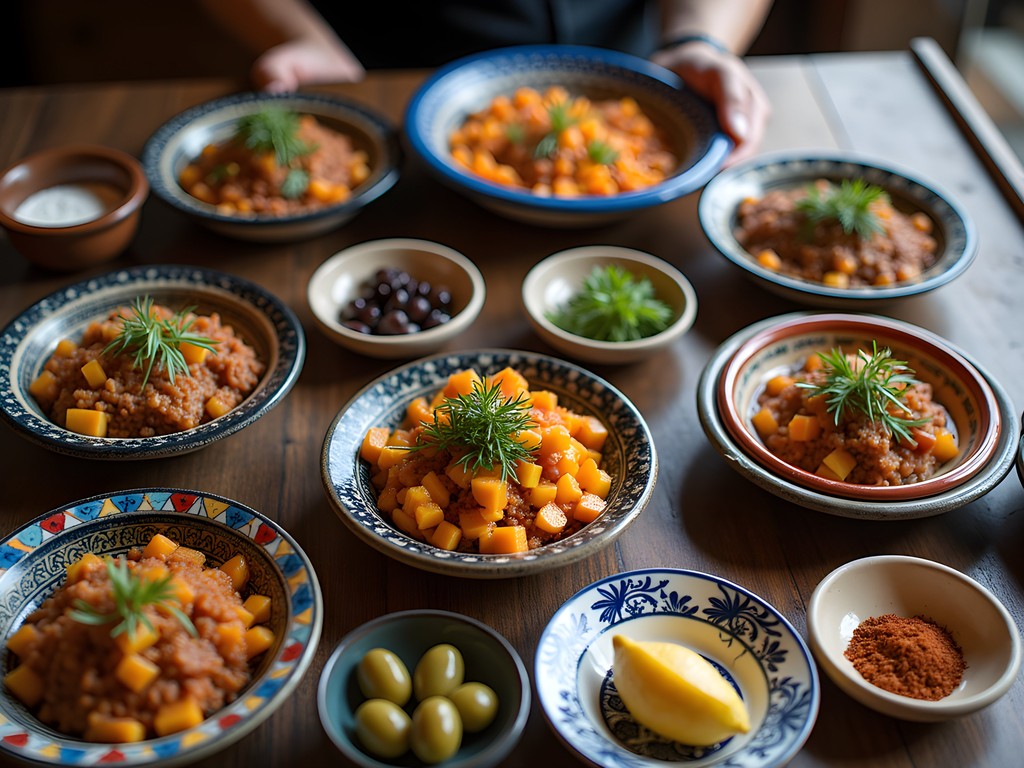
💡 Pro Tips
- Request a market-to-table experience through your accommodation for a complete culinary journey
- Learn the art of Moroccan tea preparation—the high pour is essential for proper flavor development
- Ask about ingredient substitutions available in your home country to recreate authentic flavors
Final Thoughts
As I left Fez, my suitcase heavier with spices and cookware, I realized that what I'd gained wasn't just culinary technique but a deeper understanding of how food weaves community. The Arabic calligraphy my father taught me to appreciate finds its parallel in the artistic swirls of honey on pastilla; the astronomical navigation I've studied mirrors how Fassi vendors use stars to time their market arrivals.
For couples seeking connection—both with each other and with an authentic culture—Fez offers a sensory journey unlike anywhere else. Through shared cooking experiences and market explorations, you'll discover patterns of tradition that have sustained this community for over a millennium.
I'll return to Fez again, perhaps when the night sky shifts to reveal different constellations over the ancient medina. Until then, each time I prepare a tagine in my London flat, using spices measured in Fatima's practiced pinches rather than precise teaspoons, I'm transported back to that kitchen with zellige tiles and centuries of culinary wisdom embedded in its walls.
"الطعام يجمع القلوب" (Food brings hearts together) – Arabic proverb
✨ Key Takeaways
- Seek cooking classes through riads for authentic home-based experiences rather than commercial schools
- Explore markets at different times—dawn for bread ovens, midday for spices, midnight for the local experience at R'cif
- Learn basic Arabic food terms to engage meaningfully with vendors and cooks
📋 Practical Information
Best Time to Visit
March-May (spring) when temperatures are mild and produce is at its peak
Budget Estimate
$75-150/day per couple including accommodations, cooking classes, and meals
Recommended Duration
5-7 days minimum to fully experience the culinary culture
Difficulty Level
Beginner (Though Navigation Of The Medina Requires Patience)



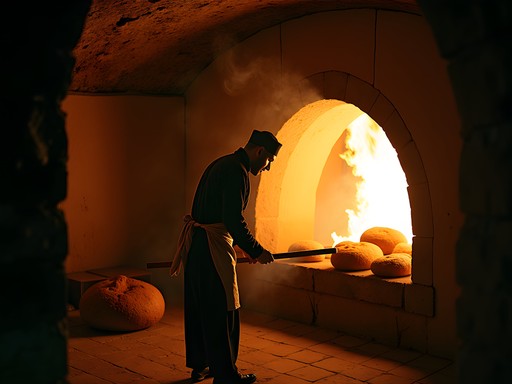
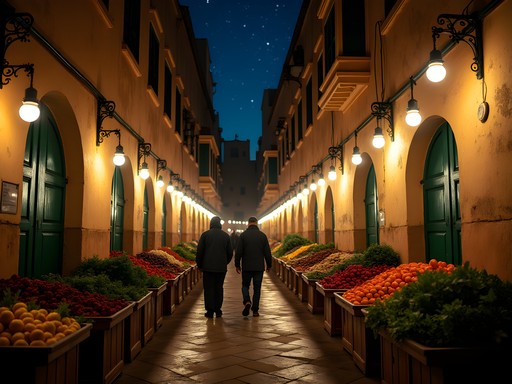
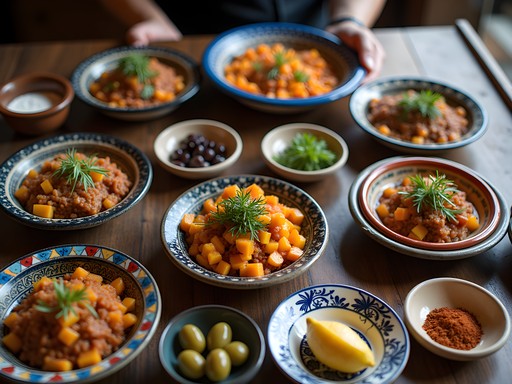


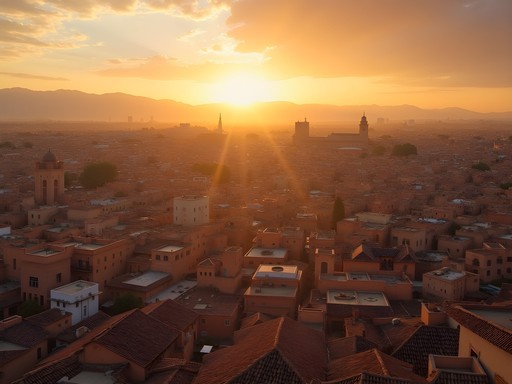
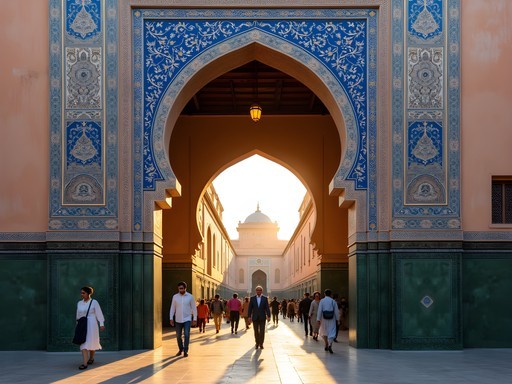
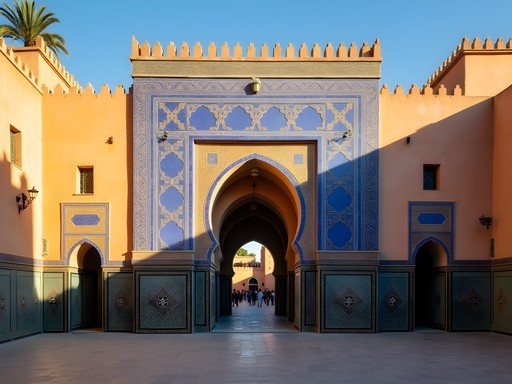





Comments
wanderlust_emma
Those bread ovens sound amazing! I can almost smell it through your writing!
Charlotte Watkins
Paul, your post brought back so many wonderful memories of my family trip to Fez three years ago! We also took a cooking class, though ours was with a gentleman named Hassan who welcomed us into his family riad. The experience of shopping for ingredients in the market with him was priceless - my teenagers still talk about learning to haggle for the perfect tomatoes! One tip for families considering this experience: book a morning class if you have kids. We found everyone had more energy and patience earlier in the day, and it left the afternoon free for exploring. I've been using the preserved lemon technique we learned ever since - it's transformed my home cooking. I even bought a traditional tagine pot when we got home and it's become a Sunday dinner tradition for us. Fez truly changes how you think about food!
moroccanfoodie
Charlotte, did Hassan teach you how to make msemen? I've been trying to perfect that folding technique for months!
Charlotte Watkins
Yes! Msemen was actually the first thing we made. The trick he taught us was to use semolina mixed with the flour and to let the dough rest longer than you'd think. Also, don't be shy with the oil when folding! My first attempts at home were disasters but I'm getting better.
explorephotographer
I visited Fez last year and also took a cooking class! The aromas in the medina are exactly as you described - completely intoxicating. Did you get to visit the honey souk? I spent nearly an hour there tasting different varieties and ended up bringing home three jars. The orange blossom honey was incredible. Your midnight market experience sounds amazing - I was too tired to venture out that late but now I'm regretting it!
Paul Franklin
Thanks for reading! Yes, the honey souk was incredible - I should have mentioned it! The orange blossom honey was my favorite too. The midnight market is worth staying up for next time, though it's definitely an experience navigating those narrow alleys in the dark!
explorephotographer
Definitely on my list for next time! Did you have any issues finding your way around the medina? I got lost at least twice a day haha
Paul Franklin
Getting lost is part of the experience! I used offline maps and still ended up wandering in circles. But honestly, some of my best discoveries happened when I was completely lost.
roamqueen
I did a similar cooking class in Fez three years ago and it remains one of my favorite travel experiences ever! Our instructor, Samira, taught us how to properly layer spices in a tagine - apparently I'd been doing it all wrong before. The trick with the preserved lemons was a game-changer. And nothing beats eating your creation on a rooftop overlooking the medina as the call to prayer echoes across the city. Paul, did Fatima teach you how to make msemen? Those folded pancakes are my white whale - I've tried making them at home multiple times and they never turn out right!
Paul Franklin
She did! The msemen technique is definitely tricky. The secret Fatima shared was in how you fold the dough - you need to create those distinct layers with lots of semolina between each fold. And the pan temperature has to be just right. Took me several attempts even with her guidance!
roamqueen
That's exactly where I'm going wrong then - not enough semolina between layers! Going to try again this weekend. Thanks Paul!
traveldiver
This is exactly what I want to do when I visit Morocco next month! Did you book Fatima's class in advance or just find it when you got there? Any tips for a first-timer?
Paul Franklin
I booked about a week in advance through my riad, but in slower seasons you might be able to join last minute. Definitely bring a small notebook for recipes - there's too much to remember! And wear comfortable shoes for the market tours. I used my pocket translator which was super helpful for asking vendors questions when our guide was busy. Enjoy your trip!
Sage Dixon
Paul, your description of dawn at the communal bread ovens took me right back to my time in Fez last year! I still remember the rhythmic sounds of women kneading dough and the sweet smell of baking bread filling those ancient alleyways. My favorite memory was when a local grandmother insisted I take her family's bread marker (those little wooden stamps) to identify our loaf among dozens of others. The way food connects generations there is something special. Did you get to try the street food in the R'cif market too? Those sardine sandwiches with charmoula were life-changing for me!
traveldiver
Sage, those bread markers sound amazing! Did you bring one home as a souvenir?
Sage Dixon
I did! I found a beautiful handcarved one in the medina. It's now hanging in my kitchen as a reminder of those mornings in Fez. Perfect little memento that doesn't take up much suitcase space!
mountainlegend
Those spice markets look incredible! I can almost smell the saffron through my screen. Adding Fez to my bucket list right now!
Paul Franklin
Thanks mountainlegend! The aromas are truly unforgettable. Hope you make it there soon!
coolgal
That photo of the spice pyramids is absolutely stunning! The colors are incredible. Saving this post for my Morocco trip planning!
Hunter Thompson
Paul! You've captured the ESSENCE of Fez perfectly! The midnight market at R'cif is such a hidden gem - I stumbled upon it by accident when I was there and it was MIND-BLOWING! The sensory overload of smells, sounds, and tastes is something I'll never forget. Did you try the street food there? Those little sardine sandwiches with harissa were life-changing for me. And Fatima sounds amazing - was her class in her home? I did one in someone's riad which was beautiful but felt a bit staged. Your experience sounds much more authentic!
Paul Franklin
Hunter - yes! Those sardine sandwiches are incredible. And yes, Fatima's class was in her actual home in the medina, not a riad. Her kitchen was tiny but so efficient, and her family kept popping in and out adding tips. Made it feel so real!
Hunter Thompson
That sounds perfect! Nothing beats learning in a real Moroccan home kitchen. Did she teach you any bread recipes? I'm still trying to perfect my khobz!
hikingnomad
Just got back from Fez last week and your post captures it perfectly! We did a cooking class with a family in the medina and it was the highlight of our trip. The smell of those spices still lingers in my clothes - not complaining! Did anyone try the camel meat at the R'cif market? We were too nervous but regret not being more adventurous now.
Dylan Turner
I tried the camel meat - it's surprisingly tender when prepared properly, somewhat reminiscent of beef but with a distinctive flavor. If you return, it's worth sampling at least once for the cultural experience.
Venture X
Premium card with 2X miles, $300 travel credit, Priority Pass